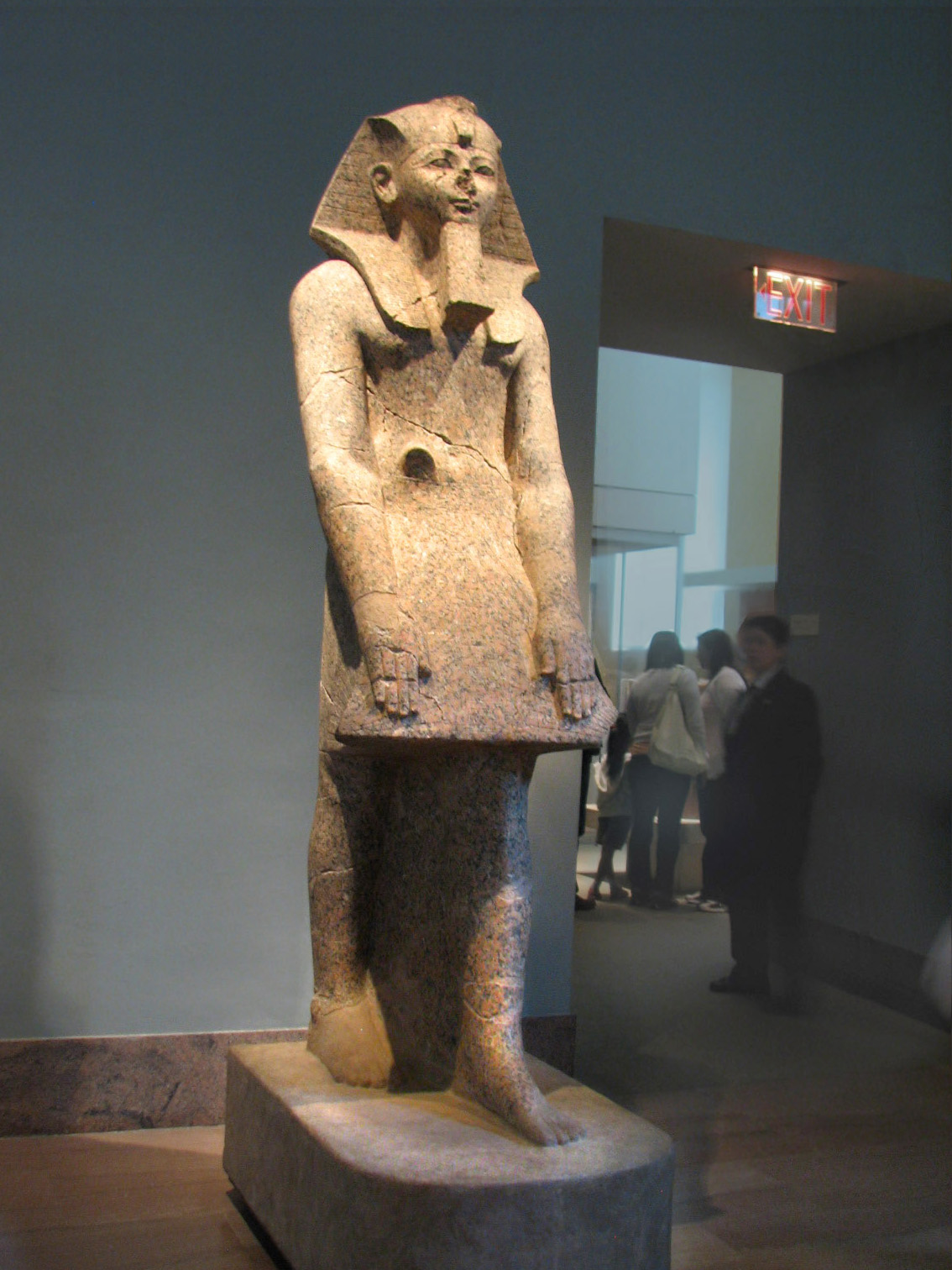|
"The fifth pharaoh of Dynasty XVIII, Hatshepsut was the daughter of Thutmose I and his queen, Ahmose. She was married to her half-brother, Thutmose II, probably before either of them reached their majority. The marriage produced one daughter, Neferure, who would later be married to her half-brother, the future pharaoh Thutmose III." (From _The Encylopedia of the Egyptian Pharoahs_ by Darrell D. Baker, page 105)
But he was only three or four years old when Thutmose II died. At first, Hatshepsut served as regent, later assuming the role of Pharoah. "The twelve-year-old Thutmose III was in no position to do other than accept Hatshepsut. Surprisingly, the partnership was quite successful, as Thutmose grew into adulthood a certain division of power seems to have occurred. Hatshepsut appears to have been concerned with the actual running of the country, an extensive building program, and diplomatic relationships, while Thutmose was trained in the military and became a full-fledged commander. Had there been any animosity between the two rulers, it is difficult to believe that Hatshepsut would have allowed Thutmose to have had access to, let alone eventual command of the army." (From _The Encylopedia of the Egyptian Pharoahs_, page 106)
  
|




